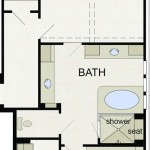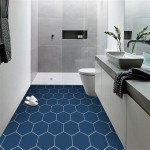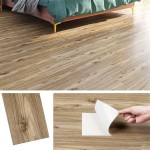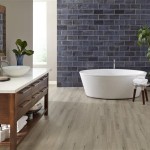Area Rugs For Dark Floors: A Guide to Creating Contrast and Harmony
Dark floors, whether hardwood, tile, or laminate, provide a sophisticated and grounding aesthetic to a home. Their inherent richness and depth can create a sense of elegance and warmth. However, dark floors can also absorb light and potentially make a room feel smaller or even somber if not properly addressed with complementary design elements. Area rugs play a crucial role in mitigating these potential drawbacks and enhancing the overall visual appeal of spaces with dark floors. Choosing the right area rug involves considering color, pattern, texture, size, and material to achieve a balanced and harmonious design.
The primary goal when selecting an area rug for a dark floor is to create visual contrast. This contrast prevents the room from feeling monotonous and allows the floor to serve as a backdrop rather than a dominant feature. The interplay of light and dark creates visual interest and depth, making the space more inviting and dynamic. Furthermore, area rugs can delineate specific zones within a room, defining living areas, dining spaces, or seating arrangements. This is particularly useful in open-concept layouts where clear definition is essential for functionality and visual organization.
Beyond aesthetics, area rugs also contribute to the comfort and functionality of a space. They provide a soft surface underfoot, reducing noise and adding warmth, especially on hard flooring materials like tile or concrete. Strategically placed area rugs can protect the flooring from scratches and wear in high-traffic areas, prolonging the life of the investment in the floor itself. Moreover, they can improve the acoustics of a room by absorbing sound waves, reducing echo and creating a more comfortable auditory environment.
Color Considerations for Area Rugs on Dark Floors
Color is perhaps the most significant factor to consider when choosing an area rug for a dark floor. The goal is to introduce lighter tones that counteract the darkness of the floor, preventing the room from feeling heavy or enclosed. Here's a breakdown of color options and their impact:
Light Neutrals: Ivory, cream, beige, and light gray area rugs are excellent choices for creating a subtle and sophisticated contrast. These colors offer a clean and airy feel, brightening the room without overwhelming the space. They complement a wide range of décor styles and provide a versatile foundation for layering other colors and textures.
Pastels: Soft pastel shades like light blue, mint green, blush pink, and lavender can add a touch of whimsy and femininity to a room. These colors work particularly well in bedrooms, nurseries, or living rooms with a more relaxed and informal atmosphere. They create a delicate contrast against dark floors, adding a sense of lightness and serenity.
Bold Colors: While light colors are generally recommended, incorporating bold colors can add drama and personality to a space. Jewel tones like emerald green, sapphire blue, ruby red, and amethyst purple can create a luxurious and sophisticated feel when paired with dark floors. However, it's crucial to use bold colors judiciously, balancing them with neutral elements to prevent the room from feeling overwhelming. Consider area rugs with bold colored patterns on a neutral background for a less intense effect.
Warm Tones: Colors like gold, rust, terracotta, and mustard yellow can introduce warmth and richness to a room with dark floors. These earthy tones create a cozy and inviting atmosphere, particularly suitable for living rooms, dining rooms, or studies. They evoke a sense of comfort and sophistication, complementing traditional or transitional décor styles.
Cool Tones: On the other hand, cool tones like cool grays, blues, and even greens can offer a modern and calming effect. These colors can pair well with dark floors, especially for spaces that are looking to achieve a peaceful environment. Make sure to account for the amount of light in the room, as cool tones might make the room feel darker.
Pattern and Texture: Adding Visual Interest
Beyond color, pattern and texture play a vital role in adding visual interest and depth to a room with dark floors. The right pattern or texture can elevate the space from bland to captivating, creating a focal point and enhancing the overall design scheme.
Geometric Patterns: Geometric patterns, such as stripes, chevrons, diamonds, and intricate linear designs, can add a modern and dynamic touch to a room. These patterns create visual movement and can help to define specific zones within a space. They work well in minimalist, contemporary, or transitional décor styles.
Floral Patterns: Floral patterns, whether traditional or abstract, can introduce a sense of romance and elegance to a room. Large-scale floral patterns can create a bold statement, while smaller, more delicate floral motifs offer a subtle and refined aesthetic. Floral patterns are particularly suitable for bedrooms, living rooms, or dining rooms with a more traditional or romantic décor style.
Abstract Patterns: Abstract patterns, characterized by their non-representational designs, can add a touch of artistic flair to a room. These patterns offer a unique and contemporary aesthetic, allowing for greater freedom of expression and creativity. Abstract patterns work well in modern, eclectic, or bohemian décor styles.
Texture: Texture refers to the surface quality of the area rug, which can be smooth, rough, plush, or shaggy. A textured area rug can add depth and dimension to a room, creating a tactile and visually stimulating experience. Consider shag rugs for a soft and cozy feel, jute rugs for a natural and rustic touch, or hand-knotted rugs for a luxurious and intricate texture.
When selecting a pattern and texture, consider the overall style of the room and the desired effect. A busy pattern can create a bold statement, while a subtle texture can add depth without overwhelming the space. It's also essential to consider the practicality of the pattern and texture in terms of maintenance and durability.
Size and Material: Achieving Proportionality and Functionality
The size and material of an area rug are crucial considerations that impact both the aesthetics and functionality of a space with dark floors. Choosing the right size ensures that the rug is proportional to the room and furniture, while selecting the appropriate material guarantees durability, ease of maintenance, and suitability for the intended purpose.
Size: The size of the area rug should be determined by the dimensions of the room and the arrangement of the furniture. In a living room, the rug should ideally be large enough to accommodate all of the furniture legs, or at least the front legs of the sofas and chairs. In a dining room, the rug should be large enough to extend beyond the edges of the dining table when chairs are pulled out. In a bedroom, the rug can be placed under the entire bed, or partially under the bed with a generous overhang on the sides and foot of the bed. Incorrect size can make a space appear disproportionate and feel awkward.
Material: The material of the area rug should be chosen based on factors such as durability, traffic, maintenance, and personal preference. Wool is a classic choice, known for its durability, stain resistance, and luxurious feel. Synthetic materials like nylon and polyester are more affordable and offer excellent stain resistance and durability, making them suitable for high-traffic areas. Natural fibers like jute, sisal, and cotton are eco-friendly options that add texture and visual interest but may require more maintenance. The material should be fit for the purpose of the room, and consider who will be using the space.
Maintenance: Different rug materials require different levels of maintenance. Wool rugs are relatively easy to clean and maintain with regular vacuuming and occasional professional cleaning. Synthetic rugs are often stain-resistant and can be cleaned with mild soap and water. Natural fiber rugs may require more specialized cleaning methods to prevent damage or discoloration. Consider the maintenance requirements of the material and choose one that aligns with lifestyle and cleaning capabilities.
Underlay: The use of an underlay beneath the area rug is highly recommended. An underlay provides cushioning, prevents the rug from slipping, and protects the flooring from scratches and wear. It also extends the lifespan of the rug by preventing it from being crushed or distorted over time. Choose an underlay that is specifically designed for use with area rugs and that is appropriate for the type of flooring.
Careful consideration of color, pattern, texture, size, and material will allow for the selection of an area rug that enhances the beauty and functionality of any space with dark floors. Balancing contrast and harmony is key to creating a visually appealing and inviting atmosphere.

What Are The Best Rugs For Dark Wood Floors Nycleaners Blog

Area Rug Ideas For Dark Floors Living Spaces

20 Best Rugs For Your Dark Wood Floors

20 Best Rugs For Your Dark Wood Floors

12 Types Of Area Rugs For Dark Wood Floors Anne Thimble

What Colour Rugs Go With A Dark Or Light Wood Floor Tsar Carpets

These Are The Best Rug Colors For Dark Floors

What Color Rug Goes With Dark Wood Floors Rea

Colorful Geometric Living Area Rugs For Dark Wood Floors

What Color Rug Should I Use For Dark Wood Floors Answered Decor Snob








